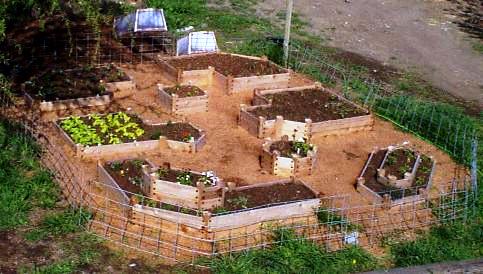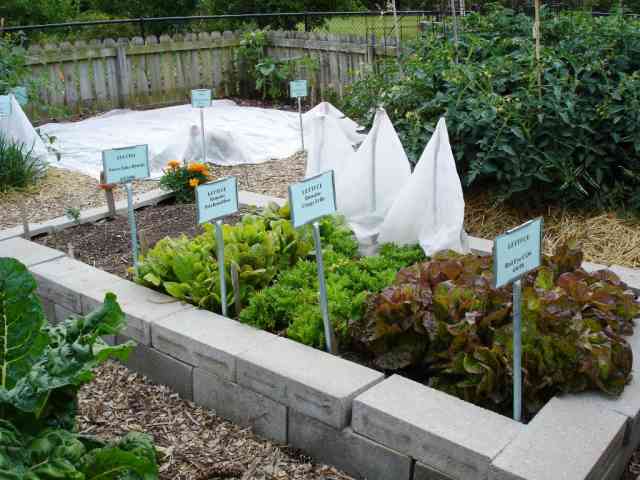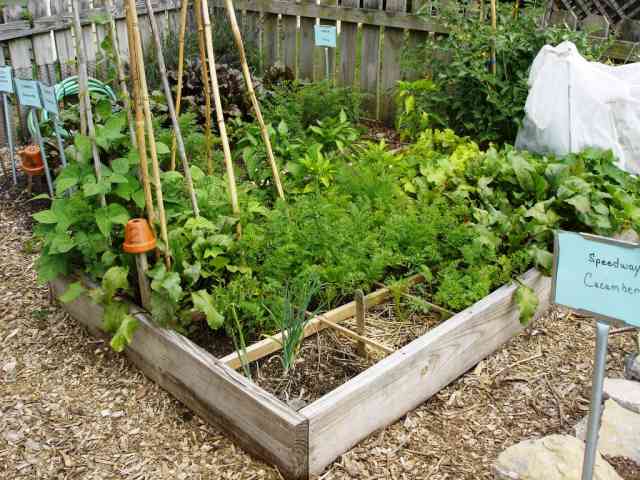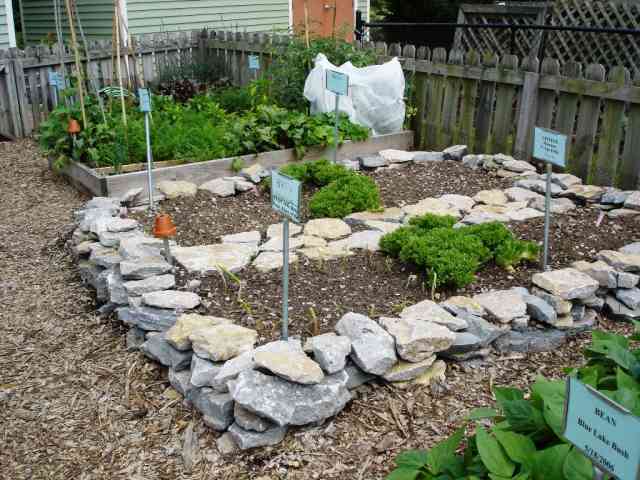 Many people cannot (or do not want to) dig a large vegetable garden and many simply do not have the space. For such gardeners, a 'no-dig' garden (or raised garden bed) may be the answer. The no-dig garden is built on top of the ground, so it does not matter what sort of soil you currently have. It consists of layering organic materials, just like a big lasagna, to create a nutrient rich environment for your plants. The garden literally composts the materials while feeding the plants, making it ideal not only for vegetables, but also for flowers. This is organic gardening at its simplest and best.
Many people cannot (or do not want to) dig a large vegetable garden and many simply do not have the space. For such gardeners, a 'no-dig' garden (or raised garden bed) may be the answer. The no-dig garden is built on top of the ground, so it does not matter what sort of soil you currently have. It consists of layering organic materials, just like a big lasagna, to create a nutrient rich environment for your plants. The garden literally composts the materials while feeding the plants, making it ideal not only for vegetables, but also for flowers. This is organic gardening at its simplest and best.
No-dig gardens are just the same as other gardens - just easier to build and maintain. Basically it is gardening inside a big, sandbox-type frame of wood or other permanent material. You will find your no-dig garden so easy you will wish you had made it bigger to start with. But that is the joy - you can always expand it to suit your needs. Or build several garden beds in different shapes to add interest and variety to your garden.
Benefits of no-dig gardens or raised garden beds: 
- They are easy to build (a few hours' work).
- They are “back-friendly” and virtually maintenance free.
- They mirror nature to create a rich, organic environment for your plants.
- They can be built anywhere, any time to any design.
- All the organic matter will help retain moisture (especially in summer) and the mulch will suppress weeds, prevent erosion, and keep the plant roots from getting too hot.
How to build a no-dig garden:
You will need a sunny space and a flat surface. Beyond that, just add a few ingredients and you are on your way. Apart from the border, materials required include a stack of newspaper, bales of straw and hay (or other coarse, organic material), animal manure, and compost.
1. Decide where you want your no-dig garden and make a border of bricks, logs, planks or rocks. The border will contain the organic material within and discourage the weeds around it. Make your garden 45-60cm high for planting, harvesting and maintenance without bending. Keep in mind not to make it wider than you can easily reach into the garden to the halfway mark.
 2. For the first layer, put down thick wads of wet newspaper to smother the weeds. They can contain good or bad news - it won't make any difference! Overlap the paper edges to stop the weeds coming through. Avoid the temptation to read the newspaper as you work, though it is strange how you always find the most interesting pieces of news at this time….
2. For the first layer, put down thick wads of wet newspaper to smother the weeds. They can contain good or bad news - it won't make any difference! Overlap the paper edges to stop the weeds coming through. Avoid the temptation to read the newspaper as you work, though it is strange how you always find the most interesting pieces of news at this time….
3. Now build up your no-dig garden with layers of organic material. Start with a 10cm layer of hay, followed by a thick (2cm) layer of some good organic fertilizer. This can be just about any sort of good quality material like chicken, horse, cow or sheep manure. If you do not have this sort of material available, sprinkle a layer of good commercial fertilizer (No need to go the full 2cm depth with commercial material). Continue with a 20cm layer of straw, followed by another 2cm layer of fertilizer.
4. Keep alternating these layers until the garden is as high as you want it to be. The idea is to stack layers of fine and coarse compostable materials. You can add layers of whatever organic materials you have available. You could add shredded autumn leaves piled up over winter, old straw from a horse-stable, or kitchen scraps. After each layer, water lightly, and smell the goodness.
5. Top off the garden with 10cm of compost. Use home grown compost, or buy a bag of it. Now you  are ready to plant, however, it is a good idea to cover your pile and let it settle for a while before planting. Place a heavy black plastic sheet over the top, held down with bricks. When you remove this you will find you have a rich organic pile. Worms will quickly invade, breaking the organic material down into a nutrient rich medium, ideal for plant growth. As your garden matures you can add new layers to maintain a good, deep, rich, organic soil.
are ready to plant, however, it is a good idea to cover your pile and let it settle for a while before planting. Place a heavy black plastic sheet over the top, held down with bricks. When you remove this you will find you have a rich organic pile. Worms will quickly invade, breaking the organic material down into a nutrient rich medium, ideal for plant growth. As your garden matures you can add new layers to maintain a good, deep, rich, organic soil.
If you are building your no-dig garden on top of concrete or asphalt, or making a no-dig garden in a large container (saving you the trouble of making the border), leave out the newspapers and instead start with a good layer of gravel or stones - and remember some holes for drainage.
There are hundreds of different ways to make a no-dig vegetable garden, but because it is raised above ground level, the normal headaches of drainage on heavy soils or rapid drying out of light soils are overcome. The nutrient rich soil furthermore enables you to plant with less space in between plants. This type of garden can yield tremendous crops (4-6 times the amount of normal row planting), and is a great way to grow veggies organically.
What will do well? Beans, peas, capsicum, eggplant, tomato, lettuce, sweet corn, broccoli, spinach, cabbage, cauliflower, brussel sprouts and vine crops like melons and pumpkins. Root crops should not be tried until the bed is more mature. Put some herbs around your cabbage or tomato plants. And try companion planting using plants such as marigolds to help reduce the incidence of pests and diseases. Organic gardening is all about a garden in tune with itself.
Marc Vijverberg